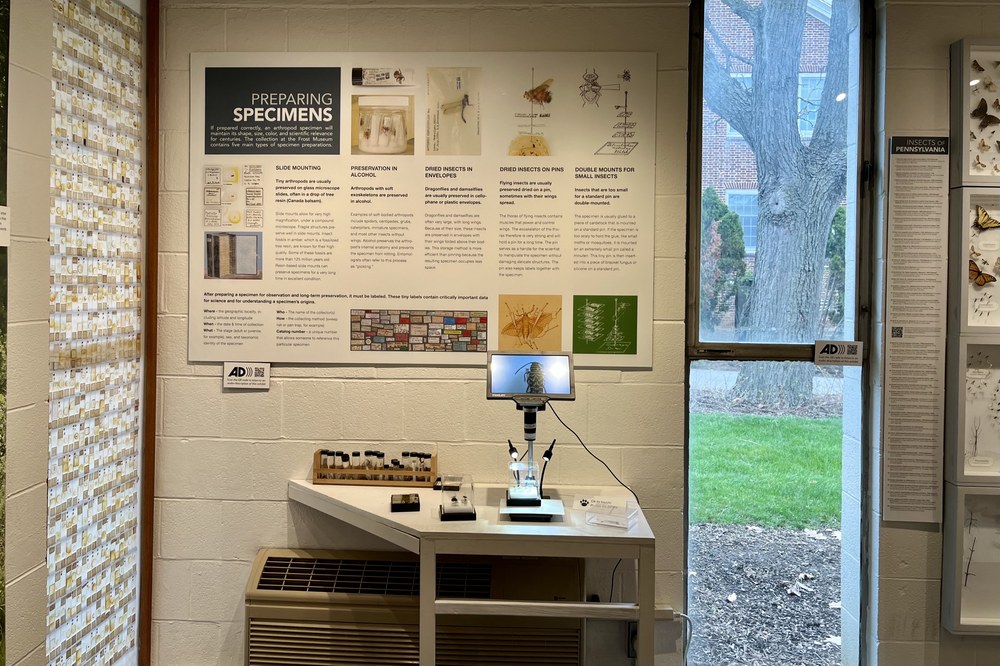Learn why and how specimens are prepared for long-term preservation, and what is required to ensure they remain scientifically useful for decades (or even centuries!)

A display at the Frost Entomological Museum on preparing specimens
Dried insects on pins
Flying insects are usually preserved dried on a pin, sometimes with their wings spread. The thorax of flying insects contains muscles that power and control wings. The exoskeleton of the thorax therefore is very strong and will hold a pin for a long time. The pin serves as a handle for the scientist to manipulate the specimen without damaging delicate structures. The pin also keeps labels together with the specimen.
Double mounts for small insects
Insects that are too small for a standard pin are double-mounted. The specimen is usually glued to a piece of cardstock that is mounted on a standard pin. If the specimen is too scaly to hold the glue, like small moths or mosquitoes, it is mounted on an extremely small pin called a minuten. This tiny pin is then inserted into a piece of bracket fungus or silicone on a standard pin.
Dried insects in envelopes
Dragonflies and damselflies (Odonata) are usually preserved in cellophane or plastic envelopes. Odonata are often very large, with long wings. Because of their size, these insects are preserved in envelopes with their wings folded above their bodies. This storage method is more efficient than pinning because the resulting specimen occupies less space.
Preservation in alcohol
Arthropods with soft exoskeletons are preserved in alcohol. Examples of soft-bodied arthropods include spiders, centipedes, grubs, caterpillars, immature specimens, and most other insects without wings. Alcohol preserves the arthropod’s internal anatomy and prevents the specimen from rotting. Entomologists often refer to this process as “pickling”.
Slide mounting
Tiny arthropods are usually preserved on glass microscope slides, often in a drop of tree resin (Canada balsam). Slide mounts allow for very high magnification, under a compound microscope. Fragile structures preserve very well in slide mounts. Insect fossils in amber, which is a fossilized tree resin, are known for their high quality. Some of these fossils are more than 125 million years old. Resin-based slide mounts, therefore, can preserve specimens for a very long time in excellent condition.
The Frost Entomological Museum
Hours: Monday-Friday 10am-4pm
The Frost Entomological Museum
Hours: Monday-Friday 10am-4pm

